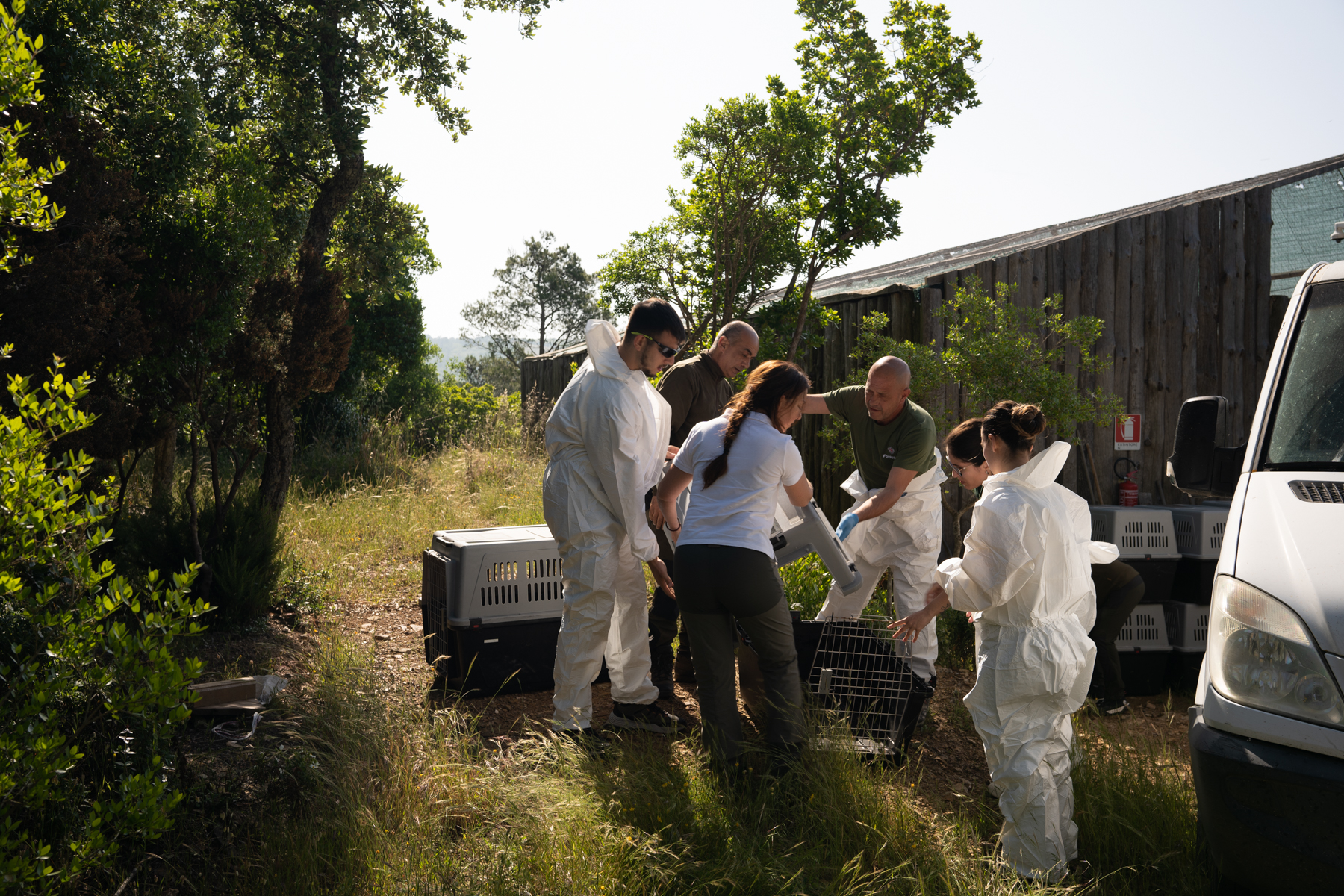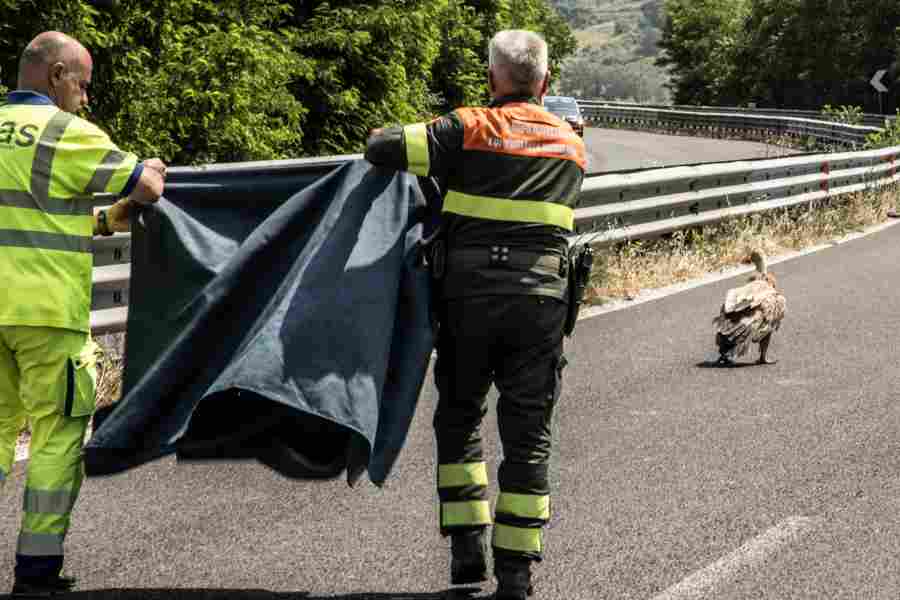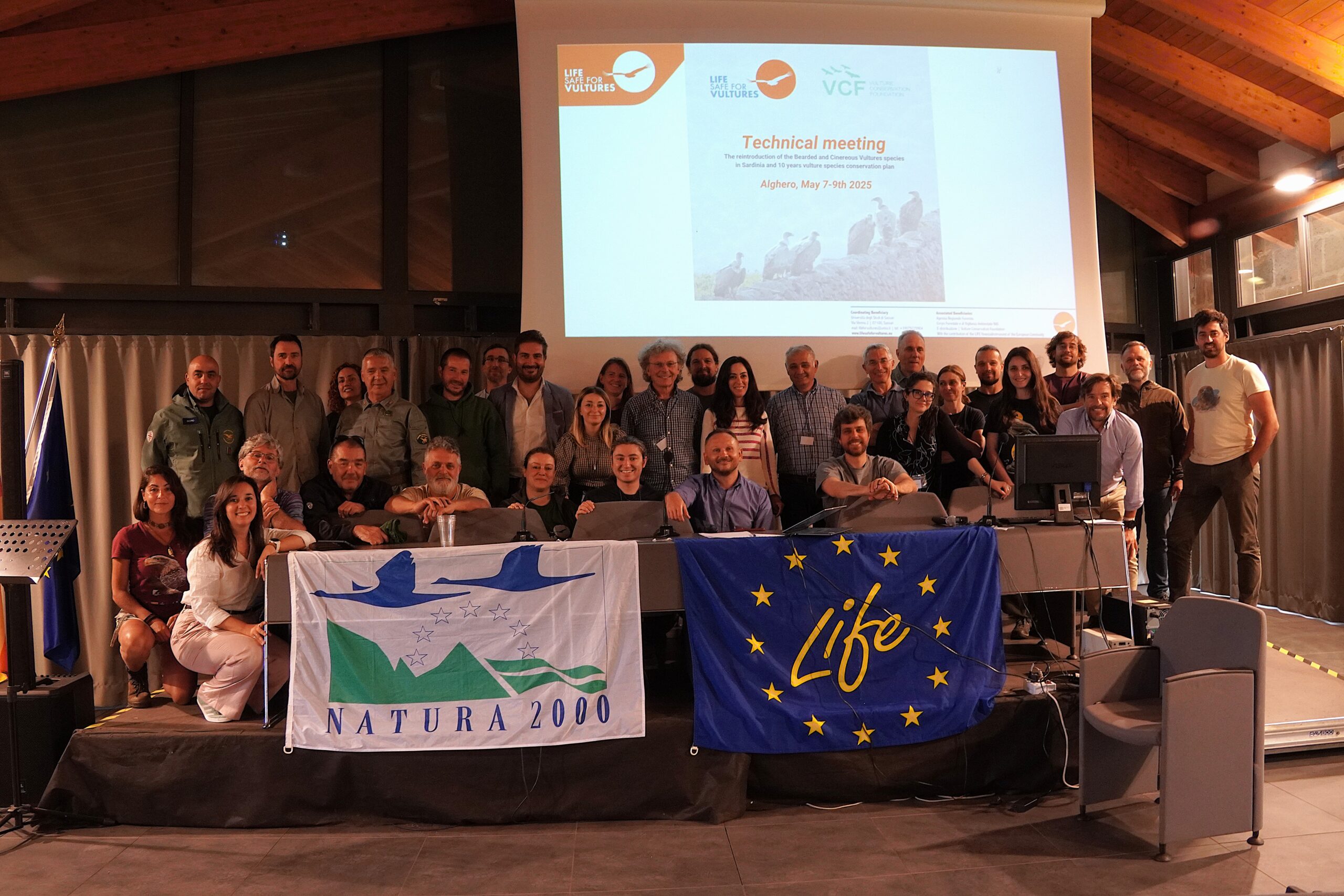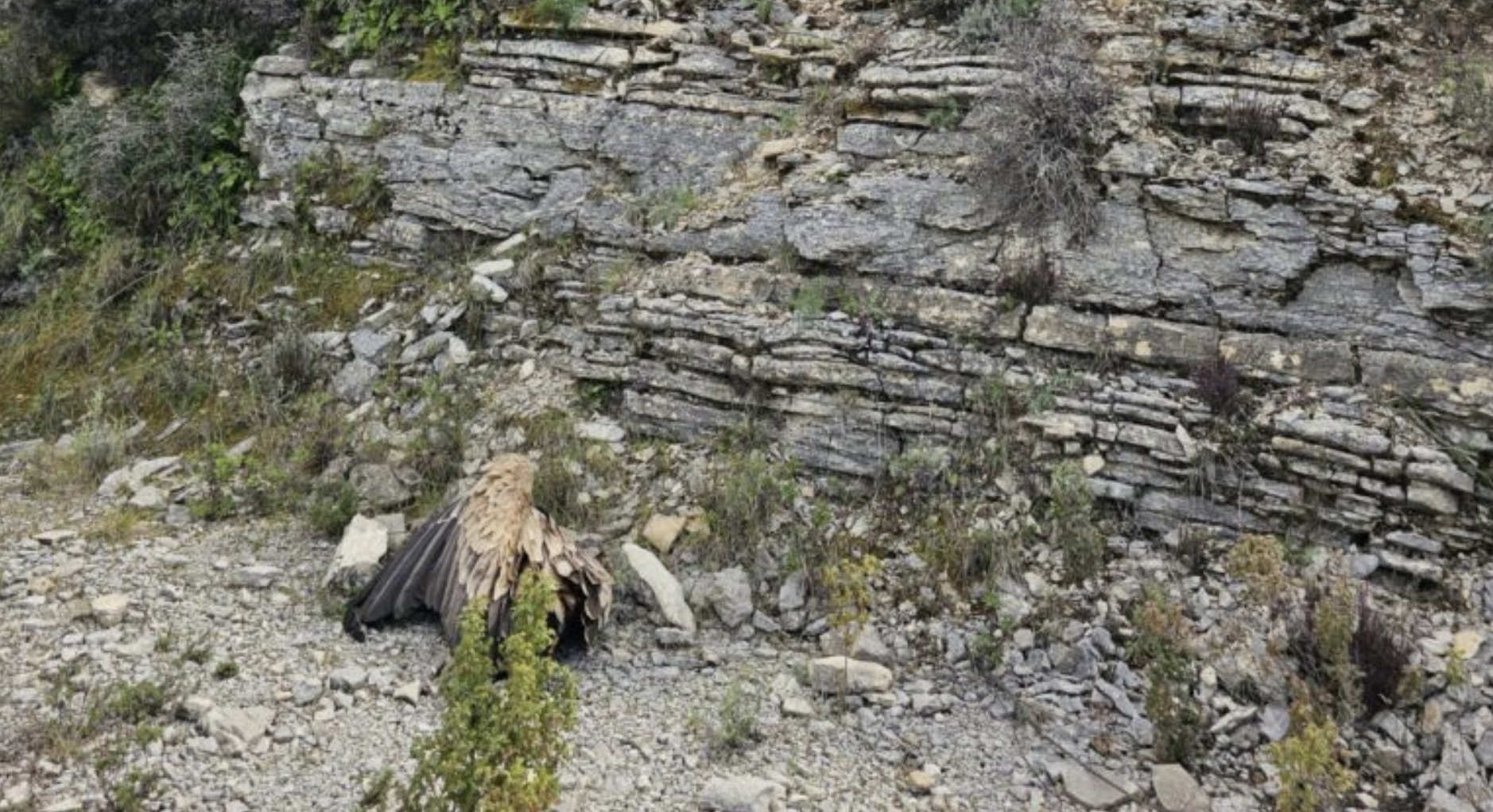22 Griffon Vultures were recently released from the acclimatisation aviary in Cea Romana – Villasalto, in south Sardinia. The 22 vultures left the aviary almost simultaneously in a rare and fascinating sight. This is the second group of Griffo Vultures released in the south of Sardinia within the LIFE Safe for Vultures project.

On October 9, the skies of Sardinia welcomed 22 new young Griffon Vultures (Gyps fulvus). The breathtaking view of the entire flock of vultures emerging from the aviary fascinated the visitors present at the event. Once they were out of the aviary, the large group quickly split into two smaller ones. The first one took advantage of the warm currents and slowly spiralled upwards in the sky. The second group, on the other hand, left the site moving south-west. Only one vulture took some time to get out of the acclimatisation aviary and flew few meters away from the building before perching and observing the situation.
The LIFE Safe for Vultures team, that manages the Griffon Vultures restocking actions in south Sardinia, hopes that these vultures will join the other ones released last April within the same project.
Whatch the release video here
Behind the scenes
All the 22 Griffon Vultures released are one year old. They arrived in Sardinia early this spring. One of them comes from France, where it hatched in captivity at the Domaine Zoologique de Pescheray. The rest of them comes from Spain. They were rescued after various accidents, rehabilitated at the Amus Center in Villafranca de los Barros (Extrematura) and donated to the project by the Junta de Extremadura government. Only one hatched in captivity and was donated to the project by the Mediterranean Wildlife Foundation in Mallorca.
Once in Sardinia, they spent their quarantine at the Bonassai (Sassari) wildlife rescue centre. In May they were moved to the Cea Romana acclimatisation aviary built by the Forestas Agency. At the aviary they had very little contact with humans. In this way, they will never associate humans with food or companionship and will keep their wild instinct intact.
Few days before the release, the veterinary team performed a complete health check up on the animals. After that each vulture was marked by bleaching some of their feathers. It is a safe and painless procedure that will allow scientist to identify them from a distance and even from pictures. The pattern on the feathers is unique and makes it easy to identify them from the other vultures hatched on the island or released in previous restocking actions. Each vulture was also equipped with a satellite transmitter. It has various purposes. First, it signals the vulture position and latest movements, which allows the team to be sure that the vulture is safe and sound. Secondly, it collects numerous data including information on the vulture behaviour, flight speed and altitude.


The importance of public events
The release in Cea Romana was the chance for nature enthusiasts to enjoy a conservation milestone together with the team that made it possible. Even though conservation can often look like it is made only for scientists, events like these, remind all of us that conservation is largely a public matter. It is vital that people are involved in conservation actions. Observing vultures being released is a once in a lifetime experience for most people and it is a great chance for them to learn about the importance of the species and the project itself. By making conservation actions public we hope that more people will advocate for the protection of these incredible scavengers and contribute to their protection.
The Cea Romana aviary will soon host a new group of Griffon Vultures that will bring the LIFE Safe for Vulture project closer to the goal of releasing 50 Griffon Vultures in the south of Sardinia. The project follows the steps of the LIFE Under the Griffon Wings project, with the ambitious aim of bringing vultures back to their original range in Sardinia. The species was once distributed over the entire island, but indirect poisoning, lack of food and collisions with energy infrastructures, dangerously lowered their number. LIFE Safe for Vultures project simultaneously works on reducing local threats to the species and restocking actions together with national and international partners.
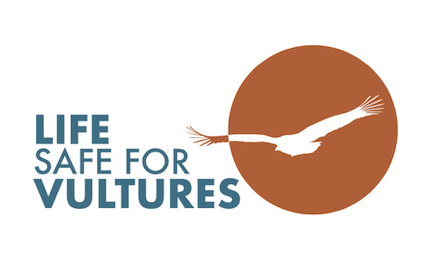
LIFE Safe for Vultures is a project co-financed by the EU’s LIFE Programme, acting as the first step to the restoration of the vulture guild in Sardinia. The University of Sassari leads the project in collaboration with Agenzia Regionale Forestas, Sardegna Corpo Forestale, E-Distribuzione and the Vulture Conservation Foundation. LIFE Safe for Vultures builds on the work of the successful LIFE Under Griffon Wings, with the ultimate objective for Griffon Vultures to regain their historic ranges and distribution areas from the central-eastern part of Sardinia to the south and at the same time promote the long-term survival of the species on the island. The project team is working to expand the network of farm feeding stations, create several anti-poison dog units to tackle wildlife poisoning, establish an additional feeding station in the south of the island, restock the population by importing 40 additional Griffon Vultures and reduce the threat of collision and electrocution with energy infrastructures.

